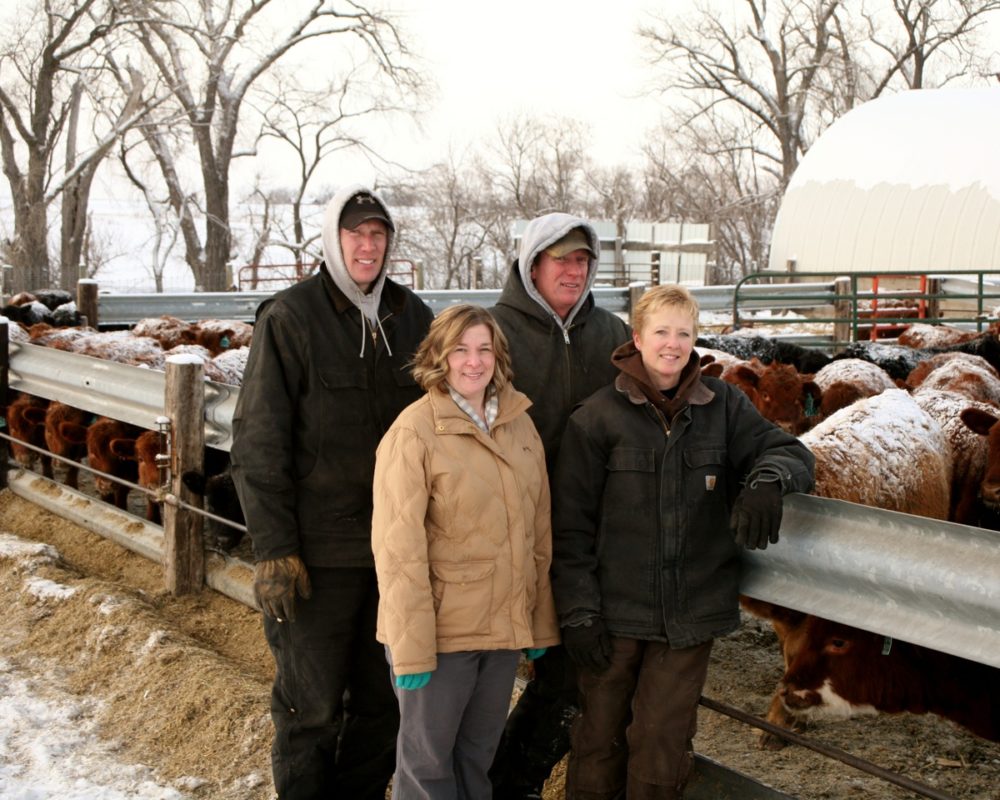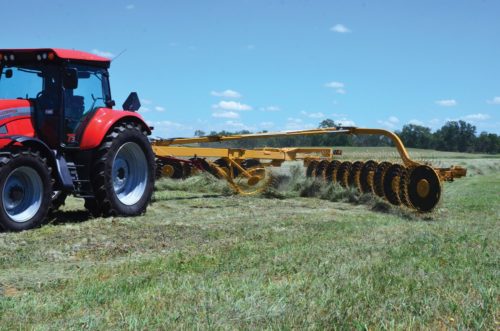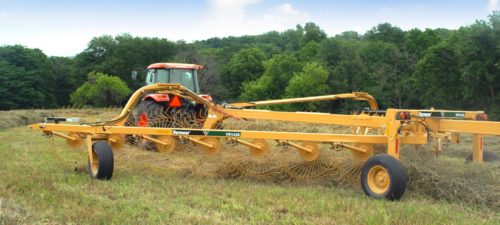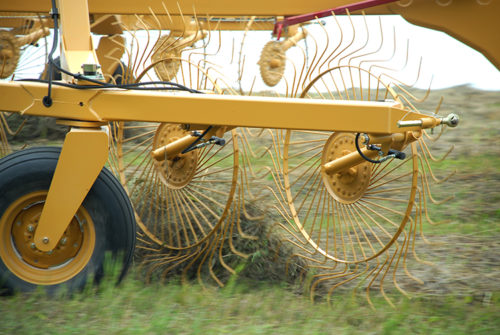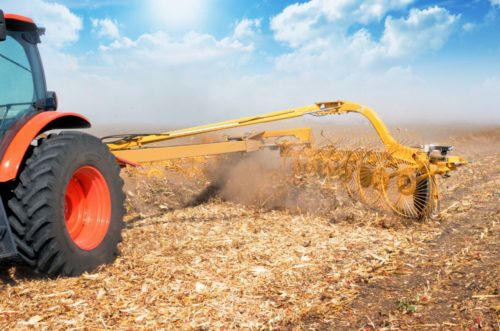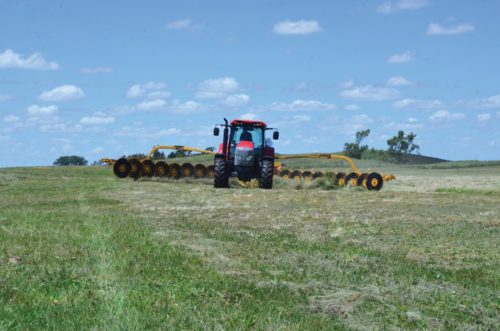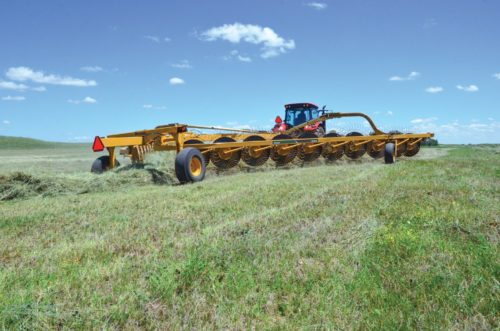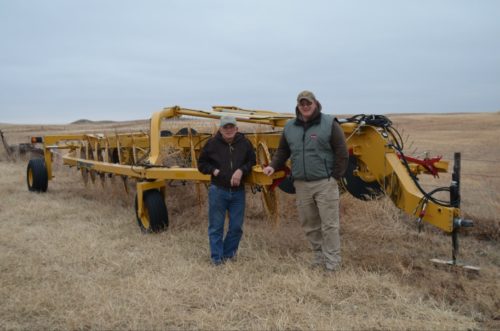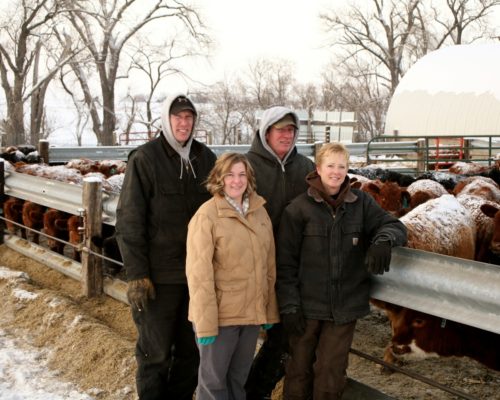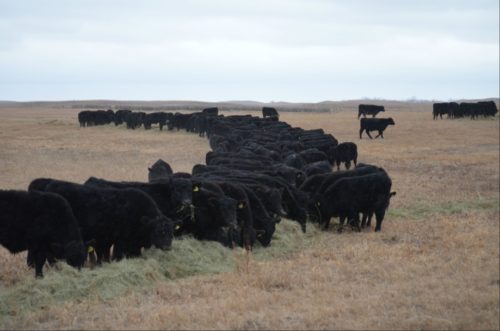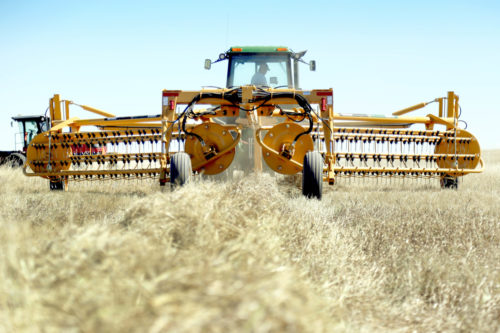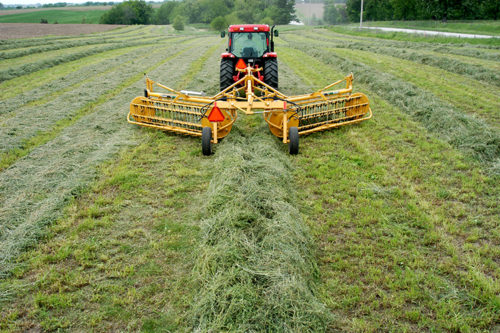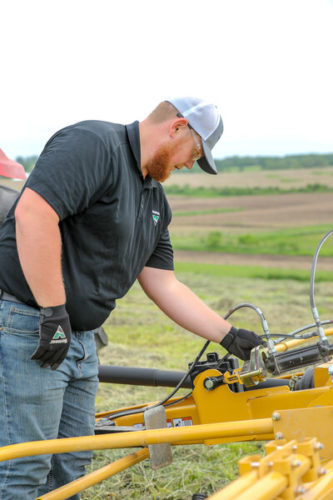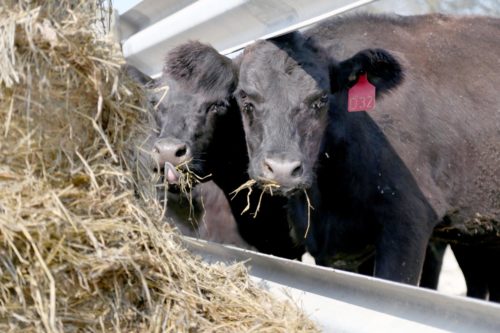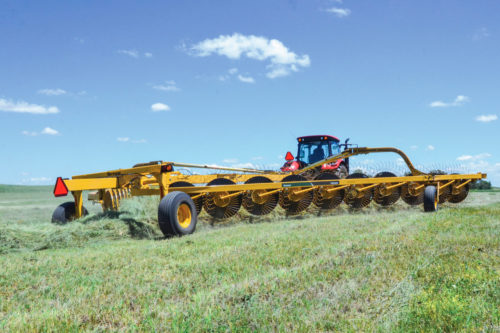Rake in Greater Capacity and Higher Hay Quality
March 2015
It’s been said that the steel-toothed dump rake was first introduced in the 1860s. Of course, the process back then was to rake hay into piles, which were then pitched onto a wagon for transport to a haystack or the barn loft. To make windrows for the balers that came later, the operator simply spaced the “dumps” equally so they lined up in the field.
The irony is that until they recently purchased a Vermeer VR2040 High-Capacity Wheel Rake, Butch and Matt McGinn, who own a ranch between Anselmo and Dunning, Neb., have been using a dump rake on approximately 3,000 acres of grass hay since the day Butch became the third generation operator.
“We did buy a smaller wheel rake about 10 years ago,” says Butch. “But, we mainly used it to go around the low, wet areas so we had room to turn around with the dump rake. Until we traded for the VR2040 this past year, we were using both a wheel rake and a dump rake because nobody was building a wheel rake that was big enough to make a good windrow.”
“Now, the VR2040 makes a windrow big enough to work for us and lets us rake with the lay of the land,” Matt adds, noting that they are using a Vermeer 605 Super M Baler to package the crop. “That brings up another advantage of the VR2040. With the dump rake, we used to have to give the guy on the rake an hour head start so he would have a few windrows ready. Now, the minute the rake starts, the baler can start. It’s meant a big change for us. I’d never go back to the way we were doing it.”

Butch explains that even though a windrower or mower conditioner might be faster than a sicklebar mower and rake, field conditions simply don’t allow it.
“If you use a swather, the windrower never gets dry,” he says. “There’s always just enough moisture on the bottom of a windrow that, even if you turn it, it wouldn’t be dry enough by the end of the day. And by the next morning, it’s wet on the bottom again.”
Hence, despite new equipment and technology, the McGinns have had to rely on older, tried-and-true methods. That is until the VR2040 came along, allowing them to at least park the dump rake and replace two rakes with just one.
“That’s part of the reason we introduced the VR2040 and smaller VR1428,” says Lucas Graham, Senior Product Engineer for rakes and bale processors at Vermeer. “In some of the prairie crop areas and because of the recent droughts, it sometimes takes 40 feet of coverage to make a good windrow. So we were seeing more demand for a rake of this size.
“Of course, if the crop is heavier in a particular area, the operator can easily narrow the raking width to as little as 25 feet without changing the windrow width,” he adds, pointing out another unique feature of Vermeer rakes.
While the McGinns may use a rake just six to eight weeks out of the year, Grant Breitkreutz, who, along with his wife, Dawn, and his brother and sister-in-law, Seth and Kelly Breitkreutz, own and operate Circle B Custom Company near Redwood Falls, Minn. They use a Vermeer VR2040 wheel rake almost daily in the summer and fall. Even though he did not take delivery of the machine until this past August, they have already used it on 2,000 acres of irrigated grass hay and more than 2,000 acres of corn stalks that are baled with three Vermeer 605 Super M Cornstalk Special Balers and two 605 Super M Balers.
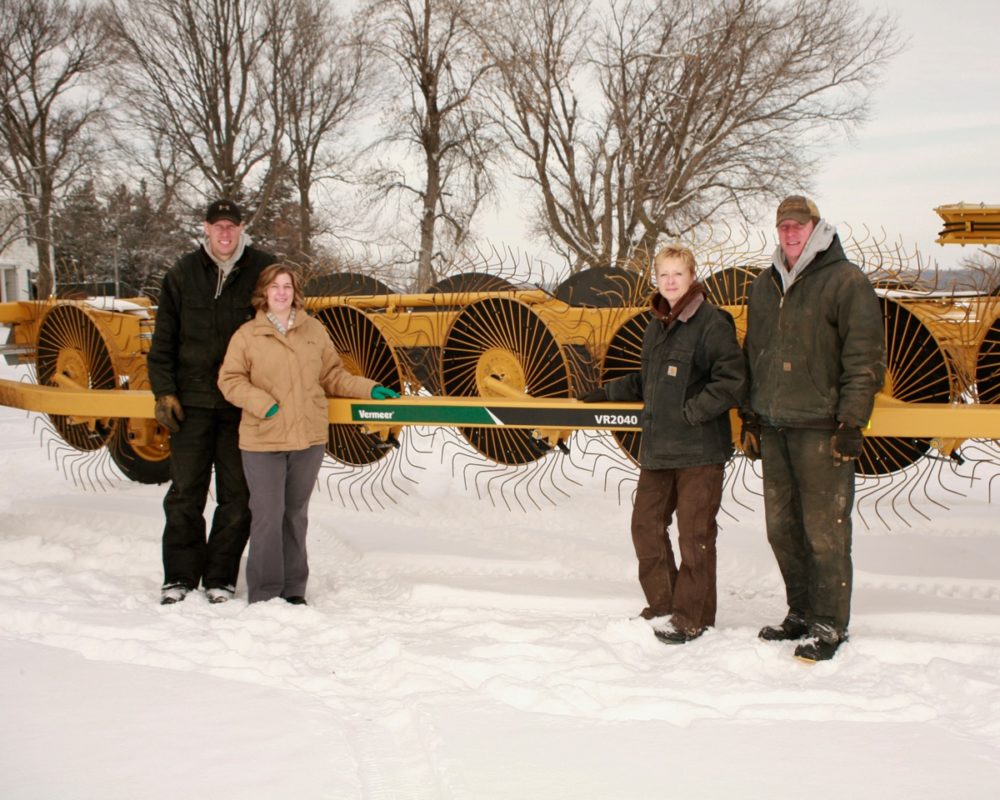
The greatest benefit from buying the VR2040, Breitkreutz says, is it has allowed them to increase productivity by an estimated 30 percent compared to a 28-foot rake from a competitive brand. However, he says it has also made it easier for them to hire and train employees, especially since they seldom have the same crew from week to week, due to the part-time and seasonal nature of the job.
“If they can drive a tractor, they can make a bale behind this rake,” he says. “I don’t have to teach them to weave back and forth or show them how to make a bale anymore. With the adjustment built into the VR2040, we’re making a 5 1/2 to 6-foot windrow, so all they have to do is stay centered over that windrow and they’ll kick out a perfect bale every time.”
Breitkreutz notes that the wider raking width also allows the rake operator to slow down and make a better windrow – although he has had it up to 14 miles per hour to keep ahead of 3 balers in a corn field. While most of the corn stalks are custom baled as bedding, they have several customers who want to use them as feed. That’s when he most appreciates the hydraulic suspension and independent wheel flotation.
“For those customers, we’ll set the down pressure at 950 to 1,000 pounds so it just skims the stubble,” he says. “That lets us pick up the majority of the residue without getting any dirt or debris in the bales,” he adds, noting that it even leaves the root balls behind. “We actually put up separate bales for those clients and they tell us they just love them.”
The VR2040 has also proven beneficial on the grass hay that Circle B mows and bales up to three times a year. The land actually belongs to the Southern Minnesota Beet Sugar Co-op and is used as a disposal site for waste water from beet processing.

“Not only is there a lot of hay per cutting, but we have a small window of time to get it cut and baled so they can get the water back on it,” he relates. “Since we bought the VR2040 and a Vermeer TE330 Tedder, we’re getting hay put up a lot faster than we were a year ago, which is making the plant a lot happier, too. If the guy on the rake can get a head start, he can stay ahead of three balers.”
Breitkreutz says five inches of water, which contains a two percent sugar solution, applied every week makes for a thick, lush crop. That means they have to ted it a minimum of two times before raking it ahead of the balers. This past summer, following some untimely rains, they had to ted one portion of the field five times before it could be baled. Still, he has nothing but praise for his Vermeer equipment.
“It would be a challenge to find a tedder that has as many miles on it as the TE330, especially on ground that’s as rough as some of this is,” he says. “In fact, the last time we had both the Vermeer VR2040 and our old wheel rake in the same field, the tool bar on both of them was just ‘hammerin’ up and down. Yet, the wheels on the VR2040 were just floating over the contours, while the wheels on the old one were just bouncing all over the place.
“The other thing is we’ve already covered about 2,000 acres of grass hay and at least 2,000 acres of corn stalks since we got it,” he continues. “Yet, we haven’t replaced a single tooth on it.”
“Having a high-capacity rake of this size and durability has definitely saved us money and made us a lot more productive,” he concludes. “We’re already looking at trading for another one next year.”
Read More: There Will Always Be A Place For Rakes
